#queen lovisa ulrika
Explore tagged Tumblr posts
Text

Queen Lovisa Ulrika's Funeral Crown
When Queen Lovisa Ulrika died in 1782, King Gustav III had a funeral crown made. It was made of gold-plated silver with a black velvet cap. The crown was intended to be placed on the queen's coffin and is still used today in connection with royal funerals.
Queen Lovisa Ulrika is remembered for establishing the Royal Swedish Academy of Letters in 1753. She was also a patron of artists.
Photo: The Royal Court of Sweden
#swedish royal family#swedish crowns#queen lovisa ulrika#king gustav iii#crown jewels#artefacts#my upload
8 notes
·
View notes
Text
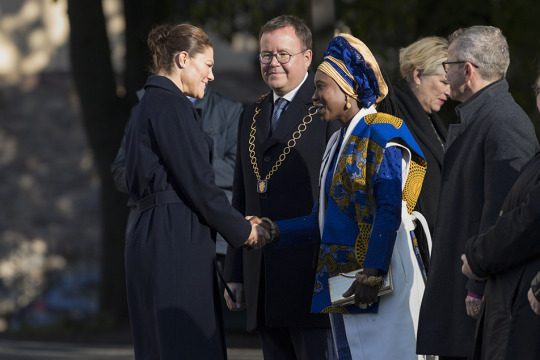
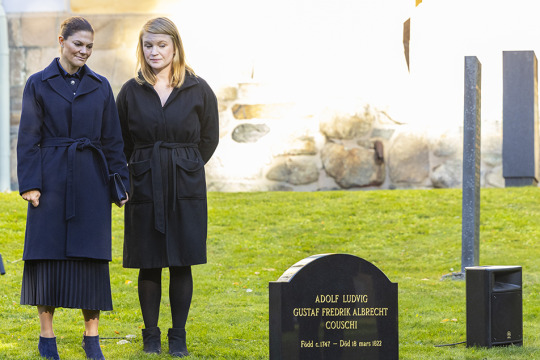
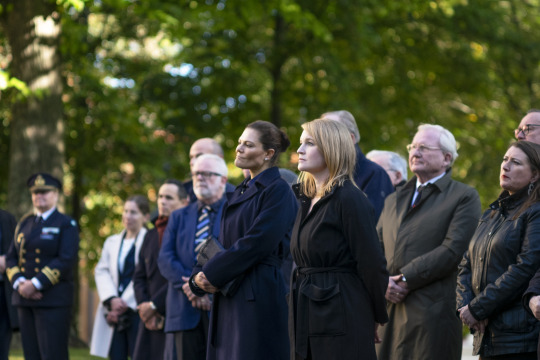
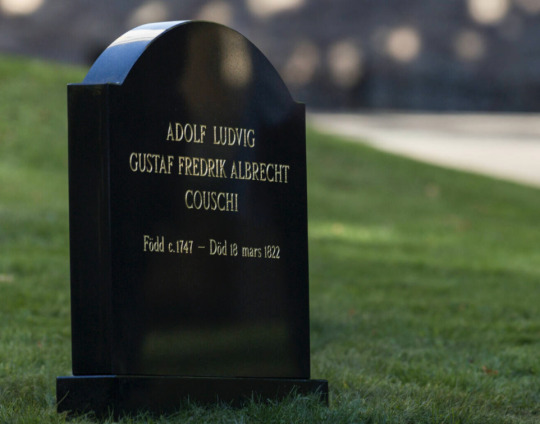
9th October 2023 // Crown Princess Victoria attended the unveiling of a memorial to Adolf Ludvig Gustaf Frederik Albrecht Couschi, known during his lifetime as Gustav Badin. Couschi was enslaved and trafficked from a Danish colony in the West Indies. He was raised in the court of Queen Lovisa Ulrika and became a well known public figure in the late 18th and early 19th century.
9 notes
·
View notes
Text
15 questions for friends
Thank you for tagging me @leenieweenie12 and @potter-solomons!
Are you named after anyone? Yes! An old Swedish queen, Lovisa Ulrika 👑 (my name is Lovisa Ulrika Elisabeth)
When was the last time you cried? More than a week ago, thankfully. Yay for PMS!
Do you have kids? Nope! Me and my husband always knew we didn't want kids 👫❤️
What sports do you play/have you played? Mainly basketball (for several years) but also tennis and golf.
Do you use sarcasm? Pfft! No. Not ever 🙄 I mean, who does? Why would I?
What’s the first thing you notice about people? Facial expressions - like smile/non smile, eyebrows etc. And posture!
What’s your eye color? Blue/grey.
Scary movies or happy endings? Scary movies, definitely! 😈
Any talents? I'm really good with animals (I can read really subtle things) I can play the piano by ear (NOT as good as I once was though) and I can sing.
Where were you born? Uppsala, Sweden.
What are your hobbies? Writing, reading, history (pref. art and literature) gardening, hunting, cooking, watching films/series, playing video games.
Do you have any pets? Two dogs, two rabbits, two pigs and a cat that lives with my mom 🐈⬛
How tall are you? 5’7
Favorite subject in school? Ethology
Dream job? Author - and I'm working towards it! I'm currently a happy housewife who writes and reads all day! 😄🏡✏️🗒️☕ No pressure tags! @elliamarts @mollybegger-blog
2 notes
·
View notes
Photo

Queen Lovisa Ulrika Library, Drottningholm Palace, Drottningholm, Sweden
#art#interior design#design#Architecture#library#queen#royal#palace#royal palace#queen lovisa ulrika#drottningholm#sweden#lovon island#luxury homes#lluxury lifestyle#history#1
295 notes
·
View notes
Photo

Princess Louisa Ulrika of Prussia, by Antoine Pesne
28 notes
·
View notes
Text
Programme for the State Visit from the Netherlands
The King and Queen of the Netherlands, Their Majesties King Willem-Alexander and Queen Máxima, will pay a State Visit to Sweden on 11–13 October 2022 at the invitation of His Majesty the King.
The visit will reaffirm and advance the excellent and long-standing relations between Sweden and the Netherlands dating back to the 1600s. The countries are working together to make Europe greener, more resilient and economically stronger. The State Visit will focus on issues such as green innovation, including the energy transition and life sciences, maritime relations and gender equality.
The ministers who will represent the Swedish Government will be announced closer to the date of the visit.
Tuesday 11 October
Morning
Arrival at Arlanda
Crown Princess Victoria and Prince Daniel meet the King and Queen of the Netherlands on arrival in Sweden.
Official welcome ceremony
The King and Queen of Sweden meet the King and Queen of the Netherlands at the Royal Stables for a procession to the Royal Palace.
Royal Stables
At the official welcome ceremony in the Inner Courtyard of the Royal Palace, the Dutch King and the Swedish King inspect the Grenadier Guards of the Life Guards, and national anthems are played. The Dutch King and Queen are presented to representatives of the Riksdag and the Government, while the Swedish King and Queen greet the Dutch delegation. The general public is welcome to attend.
The Royal Palace
Following the welcoming ceremony, the Dutch King and the Swedish King give a press statement in Queen Lovisa Ulrika’s Dining Hall in the presence of the Dutch Queen and the Swedish Queen.
Luncheon
The King and Queen host a luncheon at the Royal Palace for their guests.
Accompanying ministers and representatives from the Dutch delegation attend a luncheon at the Ministry for Foreign Affairs.
Afternoon
Meeting with the Speaker of the Riksdag
The King and Queen of the Netherlands are received by the Speaker of the Riksdag.
The Riksdag
Meeting with the Prime Minister
The Prime Minister receives the King and Queen of the Netherlands in Adelcrantz House.
Vasa Museum
The afternoon concludes with a visit to Vasa Museum, where a presentation of the Vasa will take place. The visit concludes with a ceremonial return of the bell from the man-of-war Princess Sophia Albertina, which sank off the coast of the Netherlands in 1781. The Netherlands and Sweden share a special relationship with the sea and maritime environments – harbours and shipping established the foundation for relations between the countries in a defence treaty concluded in 1614.
Vasa Museum
Evening
Banquet
In the evening, the King and Queen of Sweden host a banquet at the Royal Palace in honour of their guests.
Wednesday 12 October
Morning
Roundtable discussion on business sector issues
The Swedish King and Queen and the Dutch King and Queen take part in a roundtable discussion highlighting issues related to building a sustainable, resilient and economically stronger Europe. The green energy transition, shifting supply chains and opportunities for strengthened cooperation. Participants in the roundtable discussion include government representatives and representatives of Dutch and Swedish business organisations and companies.
Luncheon at Stockholm City Hall
The Chair of Stockholm City Council and the Mayor of Stockholm host a luncheon at Stockholm City Hall. Attending the luncheon are the Swedish King and Queen, the Dutch King and Queen, Crown Princess Victoria and Prince Daniel, and Prince Carl Philip and Princess Sofia, along with around 80 other guests.
Stockholm City Hall
Afternoon
Electrified boat trip
In the afternoon, the Swedish King and Queen and the Dutch King and Queen are given a demonstration of a Candela hydrofoil, an electric boat whose hull lifts above the surface of the water as it gathers speed. A Candela can run at high speeds and for a long time on battery power, thanks to its hydrofoil system that creates 80 per cent less water friction than a regular boat. This also provides a quiet boat tour while neither waves nor wind that affect the passengers. In 2023, Candela’s new ferry will become part of the clean public transport launched in cooperation with Region Stockholm.
Candela
Stockholm Exergi
The programme includes a visit to Stockholm Exergi in Värtahamnen port. Stockholm Exergi works to secure Region Stockholm’s access to heating, electricity, cooling and waste services. The district heating network is the hub for the social benefits that Stockholm Exergi creates together with its customers and partners. Today, more than 800 000 Stockholm residents and some 400 hospitals, computer halls and other private and public sector services are connected to the district heating network which, in turn, is connected to combined heat and power plants. The plants utilise residual heat and convert biofuels and the waste that no longer can or should be recycled into energy. Stockholm Exergi also plans to build Europe’s first large-scale plant for negative emissions. This is made possible with support from the EU Innovation Fund (EUR 180 million). Using bioenergy with carbon capture and storage technology, the plant will collect 800 000 tonnes of biogenic carbon dioxide each year. It will also contribute to Sweden’s and Swedish and international companies’ goal of achieving net zero emissions.
Stockholm Exergi
SciLifeLab
SciLifeLab – Science for Life Laboratory – is a Swedish national centre for large-scale research in life sciences, medicine and the environment. At SciLifeLab, high-tech analytical methods, management of large quantities of research data and interdisciplinary collaborations are interwoven to meet the societal challenges that lie ahead of us. SciLifeLab was launched in 2010 as a collaboration between Karolinska Institutet, KTH Royal Institute of Technology, Stockholm University and Uppsala University. In 2013, SciLifeLab was designated a national research infrastructure that makes advance technology and expertise available to researchers from universities and colleges, industry and health and medical care throughout Sweden. Today, SciLifeLab supports research activities at all major Swedish universities. During their visit, the Swedish King and Queen and the Dutch King and Queen are given a presentation on these activities and deeper insight into how basic research on body cells and the technology that is needed to study them can be used to better diagnose patients to personalise health and medical care.
SciLifeLab
Evening
Reception
In the evening, the Dutch King and Queen host a concert for their Swedish hosts and invited guests, by the Tim Kliphuis Ensemble at Stockholm Concert Hall.
Thursday 13 October
Thursday’s programme takes place in Gothenburg.
Morning
Lindholmen Science Park
The day starts with a visit to Lindholmen Science Park, an international innovation cluster focused on mobility, AI, visualisation media and IT. One of Lindholmen Science Park’s primary objectives is to strengthen Sweden’s competitiveness through collaboration between the business sector, academia and society, both nationally and internationally. At Lindholmen Science Park, Chalmers University and the University of Gothenburg collaborate with high-technology industries and society on various development projects. Lindholmen is home to around 375 companies with 18 000 employees and 9 000 students, researchers, teachers and upper secondary pupils. During their visit, the Swedish King and Queen and the Dutch King and Queen are given a presentation on Lindholmen Science Park’s activities and meet staff and students from some of the innovation programmes.
Lindholmen Science Park
Lunch
The County Governor of Västra Götaland County hosts a lunch at the residence.
Port of Gothenburg
Following lunch, the Swedish King and Queen and the Dutch King and Queen are given a presentation on the Port of Gothenburg’s efforts to drive developments towards greener shipping in the EU. The Port of Gothenburg is the largest port in the Nordic countries, with over 11 000 ship visits per year from over 140 destinations worldwide. In 2019, the Port of Gothenburg established the goal of achieving 70 per cent lower emissions by 2030. Some of the Port’s terminals are already fossil-free. During the visit, a memorandum of understanding is signed between the Port of Rotterdam and the Port of Gothenburg, focusing on digital development, electric tankers and establishment of a green corridor for methanol fuel. The concept of green corridors – routes for sustainable transport – was established in the Clydebank Declaration at COP26 in Glasgow, which was signed by both Sweden and the Netherlands.
Port of Gothenburg
AB Volvo
The Swedish King and Queen and the Dutch King and Queen visit the Volvo Group. They are given a presentation of Volvo Group’s green transition, which encompasses every aspect of operations, from production to the final product. The importance of collaboration with others to promote green development is also discussed. An example of this is the collaboration with SSAB/Hybrit that has resulted in delivery of the world’s first machine made of fossil-free steel to an end customer. The Volvo Group is one of the first companies in the world to have serial production of electric heavy goods vehicles to end customers. The visit concludes with a practical demonstration of electric lorries and excavators.
Volvo
Farewell ceremony at Landvetter Airport
The State Visit concludes when the Swedish King and Queen bid farewell to the Dutch King and Queen at the farewell ceremony at Landvetter Airport.
18 notes
·
View notes
Text

Sweden: The Sweden/ The Netherlands State Visit Day 1
On October 11, 2022, the Official State Visit to Sweden from the Netherlands commenced. Following a Welcome Ceremony in the courtyard of the Royal Palace in Stockholm and a greeting within the Palace (where the King and Queen of the Netherlands met with additional members of the Swedish Royal House), King Carl XVI Gustaf of Sweden and King Willem Alexander of the Netherlands, gave speeches regarding the State Visit. This speech was conducted in the Ulrika Lovisa’s Dining Room within the Palace. Queen Silvia of Sweden and Queen Maxima of the Netherlands were also present for the speech during the State Visit. The Royals, then attended lunch at the Palace.
pc: kungahuset
#king carl xvi gustaf#queen silvia#king willem alexander#queen maxima#sweden: netherlands state visit
4 notes
·
View notes
Photo
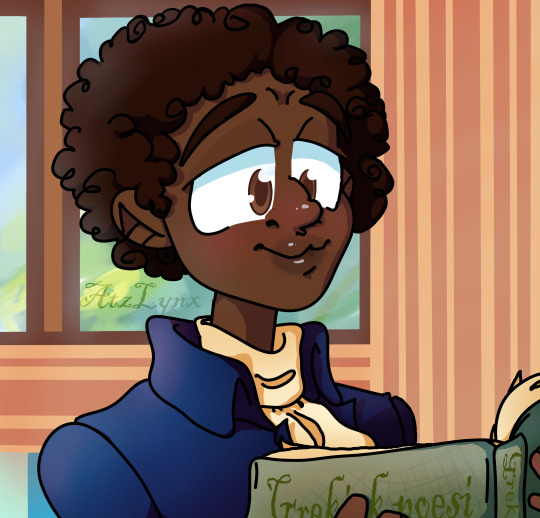
1Prince Adolf Ludvig Gustav Fredrik Albert of Sweden, or his original name: Couchi. Couchi was born 1747 in a Danish colony somewhere in Africa.
His parents died as a result of their home burning down when he was young, and so when he was 10 he was shipped off as a slave to Etastråtet (an old Danish title) “Reiser” who would later give him away to Queen Lovisa Ulrika of Sweden as a present.
Lovisa Ulrika decided to take this “opportunity” (ew) to test if an African could fit in among white people if he was raised like one.
Couchi lived with the royals in Sweden as an assistant to Lovisa Ulrika. She has said that she saw him as the son she never had. (Lovisa Ulrika had three sons already so I- bro) He was called “Badin” by the Swedes, as it meant “Joke, silly, weird, odd”. That is why I prefer to NOT call him that, though you will find that most people in modern day history know him for that name anyway.
He loved reading, which fitted Lovisa Ulrika quite nicely since she herself was a bit of a reader. Couchi was to a lot of support for her after her husband, the king of Sweden’s death. After Lovisa Ulrika’s death, Couchi would go on to serve Lovisa’s daughter Sofia Albertina, who seem to have been very fond of Couchi, with him even writing a poem about her on her birthday.
Though he had been lucky to not be shipped off to work as a farmer slave somewhere, it is very clear that he faced a lot of discrimination through his life. All from his name, to Gustav III calling him “Black man” instead of by his name at times, not even getting the chance of a higher status among the royals despite his hard work and love for languages, books, poetry and theater.
I call him prince because technically, he is. He was adopted by a queen, and so he deserves that title after all that he had been through. Honestly he looks like such a nice guy he’s so cheerful.
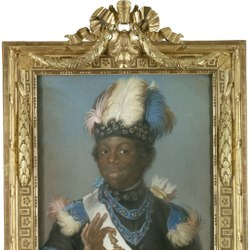
Adolf Ludvig Gustav Fredrik Albert Couchi. 1747-1822
The forgotten prince of Sweden.
#Adolf Ludvig Gustav Fredrik Albert#badin#gustav badin#sverige#swedish#sweden#swedish history#black history#african history#blm#support blm#prince#prince of sweden#art#artwork#artist#cartoony#blacklivesmatter#books#book#painting#paintings#forgotten#queen#king#gustav III#racism#antirasicm
23 notes
·
View notes
Note
Which was more seen at court? A Court Mantua or a robe de cour?
It’d depends on what court we’re talking about. Let’s remember that court attire was very detailed on what should be worn. So, in English court a mantua would be worn, and in France and the rest of Europe, a robe de cour would be the one.
Even though a court mantua and a robe de cour are practically the same thing, I’d like to point at the main difference between both. Here we go:
The sleeves. The mantua sleeves changes with the fashion (we see cuffs or ruffles of the same fabric of the bodice), while on a robe de cour the sleeves are of many lace ruffles.
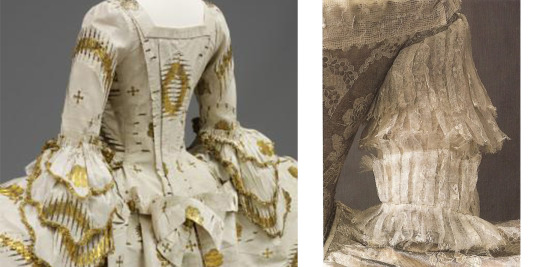
English mantua, 1755-1760 // Queen Lovisa Ulrika’s coronation robe from 1751
Closure. The mantua is a front-opening gown, while the robe de cour is back opening.
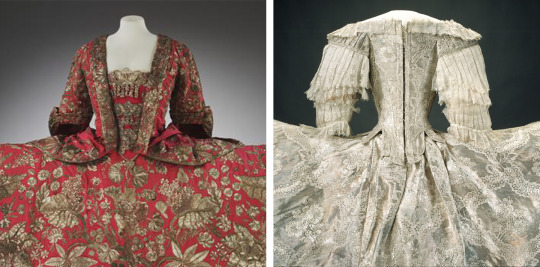
Court mantua, 1740-45 // Robe de cour of Sofia Magdalena of Sweden, 1766
The train. The court mantua’s train was an evolution of the carefully folded one from the late 17th century mantua. On the other side, the robe de cour’s train was long and simply gathered at the waist, it could also be visible only from the back, or could seem like an overskirt at the front.

Court mantua, 1750s // Wedding gown of Princess Sophia Magdalena of Denmark for her marriage to Crown Prince Gustav of Sweden in 1766
The front. The mantua has a clear square neckline, while the robe de cour has a deep round neckline, sometimes decorated by lace.

English court mantua, 1755-60 // Robe de cour coronation dress of Queen Lovisa Ulrika of Sweden, 1751
#Anonymous#court#court attire#womenswear#robe de cour#court mantua#mantua#france#england#1750s#english court#french court
135 notes
·
View notes
Photo









King Carl Gustaf and Queen Silvia hosted 2019 Sweden Dinner
On September 20, 2019, King Carl Gustaf and Queen Silvia hosted the traditional Sweden Dinner (Sverigemiddag) at Stockholm Royal Palace. The aim of the Sweden Dinner is to honor people who have made significant local, regional or national contributions. About 200 guests were received and welcomed by the King, the Queen, Crown Princess Victoria and Prince Daniel at Queen Lovisa Ulrika's Dining Hall. Among the guests, there were representatives from culture, industry, education and sports organisations in Sweden's 21 counties, as well as county governors.
#king carl gustaf#queen silvia#cp victoria#prince daniel#srf#sweden royal family#swedish royal family#bernadotte#kungahuset#royal#royals#royalty#europe royal family#world royal family#aristocracy#monarchy
151 notes
·
View notes
Photo

Queen Lovisa Ulrika, Elise Arnberg, Finnish National Gallery
http://kokoelmat.fng.fi/app?si=S+250
8 notes
·
View notes
Text



21st March 2022 // Crown Princess Victoria was present at the Royal Academy of Sciences' annual celebration. The Academy was founded by Victoria's great x6 grandmother Queen Lovisa Ulrika in 1753. The Academy's main purpose is to promote and fund research in the humanities and social sciences.
8 notes
·
View notes
Text

lovisa ulrika of prussia, queen of sweden and princess of prussia
ulrika pasch, date unknown
#art#painting#aesthetic#fashion#rococo#art history#europe#christianity#history#monarchy#women in art#oil on panel#sweden#prussia#germany#women in history#1700s#18th century#beauty
28 notes
·
View notes
Photo

09.07.2021 🇸🇪 Gala dinner at the Royal Palace The first day of the state visit ended with the Royal Couple's gala dinner for the presidential couple at the Royal Palace. Guests are welcomed in Lovisa Ulrika's dining room. The dinner was then held in the White Sea. The presidential couple and the Queen greet the guests in Lovisa Ulrika's dining room. The King brought Mrs. Elke Büdenbender to the table and the Queen was brought to the table by Federal President Frank-Walter Steinmeier. #SwedishRoyalFamily #SwedishRoyals #Bernadotte #KingCarlXVIGustaf #QueenSilvia #CrownPrincessVictoria #PrinceDaniel #CrownPrincessCouple #PrinceCarlPhilip #PrincessSofia #kungaparet #kronprinsesseparret #prinsparet #Monarchy #EuropeanRoyalties https://www.instagram.com/p/CTjLtEpl1lL/?utm_medium=tumblr
#swedishroyalfamily#swedishroyals#bernadotte#kingcarlxvigustaf#queensilvia#crownprincessvictoria#princedaniel#crownprincesscouple#princecarlphilip#princesssofia#kungaparet#kronprinsesseparret#prinsparet#monarchy#europeanroyalties
1 note
·
View note
Photo

Lovisa Ulrika (1720-1782), Queen Dowager of Sweden
By Lorens Pasch the Younger, 1775.
8 notes
·
View notes
Text
City by a canal
City by a canal
Queen Lovisa Ulrika was one of the most prominent Swedish figures of the 1700s, within political, literary and artistic spheres. Lovisa Ulrika was born in Berlin in 1720. She was the daughter of the Prussian royal couple, Fredrick William I of Prussia and Sophia Dorothea of Hanover. She grew up in a large family of which four brothers and five sisters survived into adulthood. Through their mother…

View On WordPress
0 notes